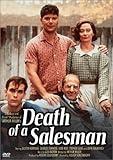
-Rob; In our new and expanded version (and one that is much closer to the kind of project I’ve always wanted it to be) a great emphasis is being put on process, discovery and solutions for visualizing the novel. So to that end you will see here in the Readers’ Guide my initial drawings (“storyboards”) for each page. How are choices made about visualizing people and events from a novel that fans have studied so deeply? Well, it ain’t easy.
These images are cleaner than some of the others as I was working with lettering and panel arrangement using a computer. But more on that later.
-Mike; This is what we in the business call an “establishing shot.” It shows us where the story is about to begin–a little round tower overlooking the sea.
The tower is called a Martello Tower. It’s a real place, and Joyce really lived there for about a week in September of 1904. They were built by the British early in the 19th century, when they feared a French invasion of Ireland. It’s now the James Joyce Museum, run by a wonderful guy named Robert Nicholson. [By the way, if you go to Dublin and ask for the Martello tower, you will get blank stares. There are many Martello towers on the coast of Ireland, especially the southeast coast.][Also, do not confuse the James Joyce Museum with the James Joyce Centre.] The museum is the tower. The Centre is in downtown Dublin & has more going on in terms of programs & activity.]
When I first saw a picture of the tower I was surprised by how stubby it was. Less phallic than you’d think, but not beyond the realm of physiological phenomena.
If you are lucky enough to go to the Joyce Museum and see the view from the top, you’ll notice that you have a great view of Dun Laoghaire (pron. “Dunleary”) , the primary ferry terminal for Dublin, the primary departure point for voyages from (and to) Ireland. So–a castle overlooking the sea: Hamlet. A castle with a view a port for leaving the island: the Odyssey. And it ties out to a moment Joyce’s life, and a moment in Irish history as well. A perfect “overdetermined” multiple overlaying of the personal, the literary, the historical… and we haven’t even talked about the religious elements… and we’re just getting started!
<< previous | next >>
View this page of the Comic
Reader’s Guide for I: Telemachus
Dramatis Personae for I: Telemachus





